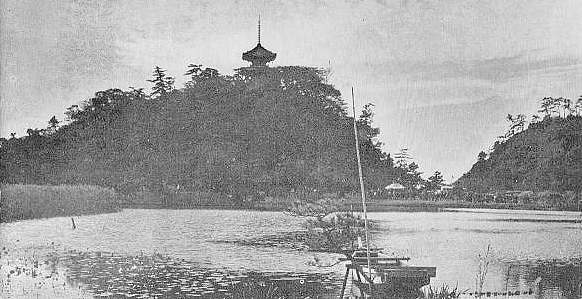
SANKEI-EN PARK
Since the end of the Second World war the government and people of Yokohama anxiously awaited the restoration of Sankei-en, so that all might again enjoy the lovely park with its national treasure class buildings. Appropriate offices of the National Government and of the governments of Kanagawa Prefecture and Yokohama City cooperated in the establishment of the Sankei-en Hoshokai (Foundation). Through the efforts of this Foundation the buildings and grounds were at last made ready and reopened to the public.
The Sankei-en was originally built by Tomitaro Hara, a merchant prince of the Meiji era who amassed a large fortune as an exporter of raw silk. He became a great patron of the arts and many notable personalities of the artistic world were encouraged by him.
The Sankei-en, product of great fortune and good taste, is more than a garden, it is a spacious park, spread over three valleys, with elements of both formal landscape gardening and of rustic beauty--a triumph of gardening art and in many ways a reflection of the personality of its creator.
Not only the grounds but the buildings merit admiration: the unobtrusive gate, the Rinshun-kaku, the Tenju-in Hall, the Gekka-den, Kimmo-Kutsu, Tenzui-in Juto, Choshu-kaku, Shunsoro and Renge-in in the inner garden, and the three storied Pagoda, the Tokeiji Sanctum and the Yokobue-an in the outer garden, are all distinguished cultural properties, of which Yokohama is justly proud.

1: View of "Sankei-en" garden
THE INNER AND OUTER GARDENS
Sankei-en is located amid gently rolling pine-clad hills on Mommoku Point, about twenty minutes by car from Sakuragi-cho Station. Street cars run near San-no-tami; a short walk down a winding, cherry blossom lane brings one to Sankei-en Park.
The entrance to the park passes between two large lotus ponds, bordered with leopard flowers (miscanthus) and dotted water lillies.
Proceeding down the main pathway one sees to the right, in a discreet corner the residence of the Hara family, its stately black roofs reaching up above the surrounding trees, and looking out on the former family garden which is now completely open to the public.
Across from the Hara residence begins a pleasant promenade which is carried by a graceful bridge out over another lotus pond; from here the path leads across the broad green expanse of the outer garden, dominated by the three-storied Pagoda which crowns the bordering hill. At the end of this lies the Inner Garden with its numerous fine buildings. These buildings are not as well known as they might be since for many years they were not accessible to everyone. With the restoration and reopening of the park, however, more and more out-of-town visitors and foreign tourists have come to visit each year.
Grouped about the foot of a hill near the sea are the nine major buildings of the Inner Garden; the Gate, the Rishun-kaku, Tenzui-in Juto, Gekka-den, Kimmo-kutsu, Tenju-in, Choshu-kaku, Shuso-ro and Renge-in. Each one is a masterpiece of the ancient culture of Japan and a lasting memorial to Tomiktaro Hara.